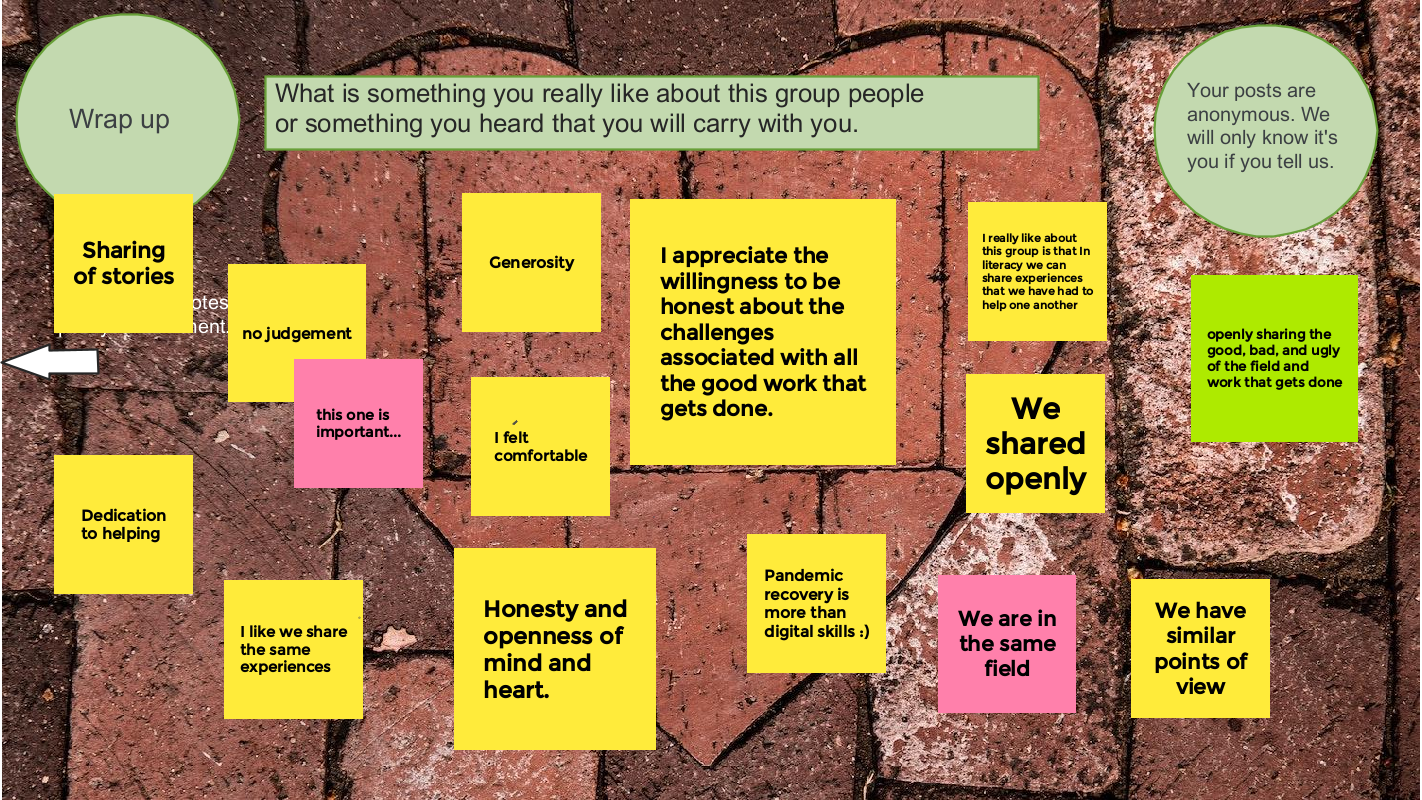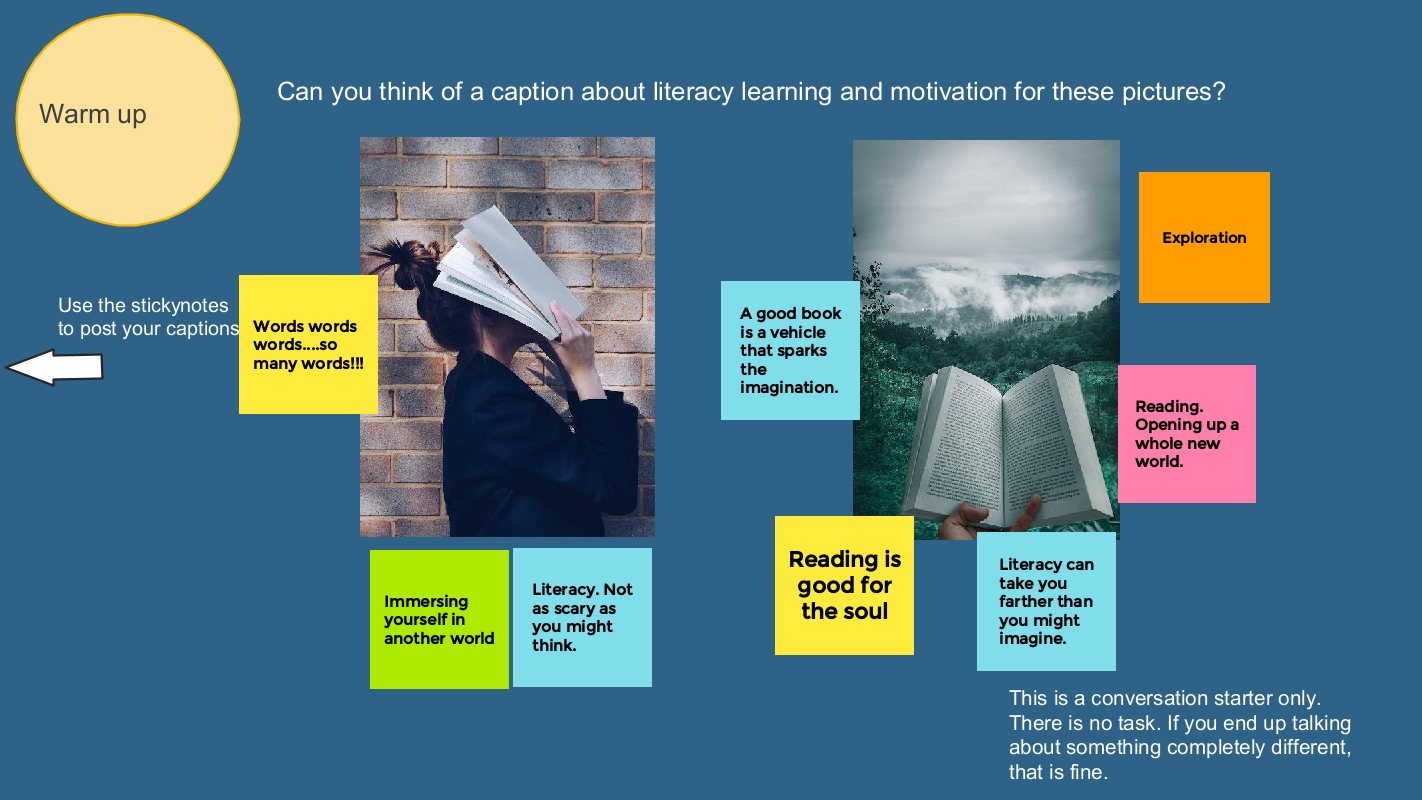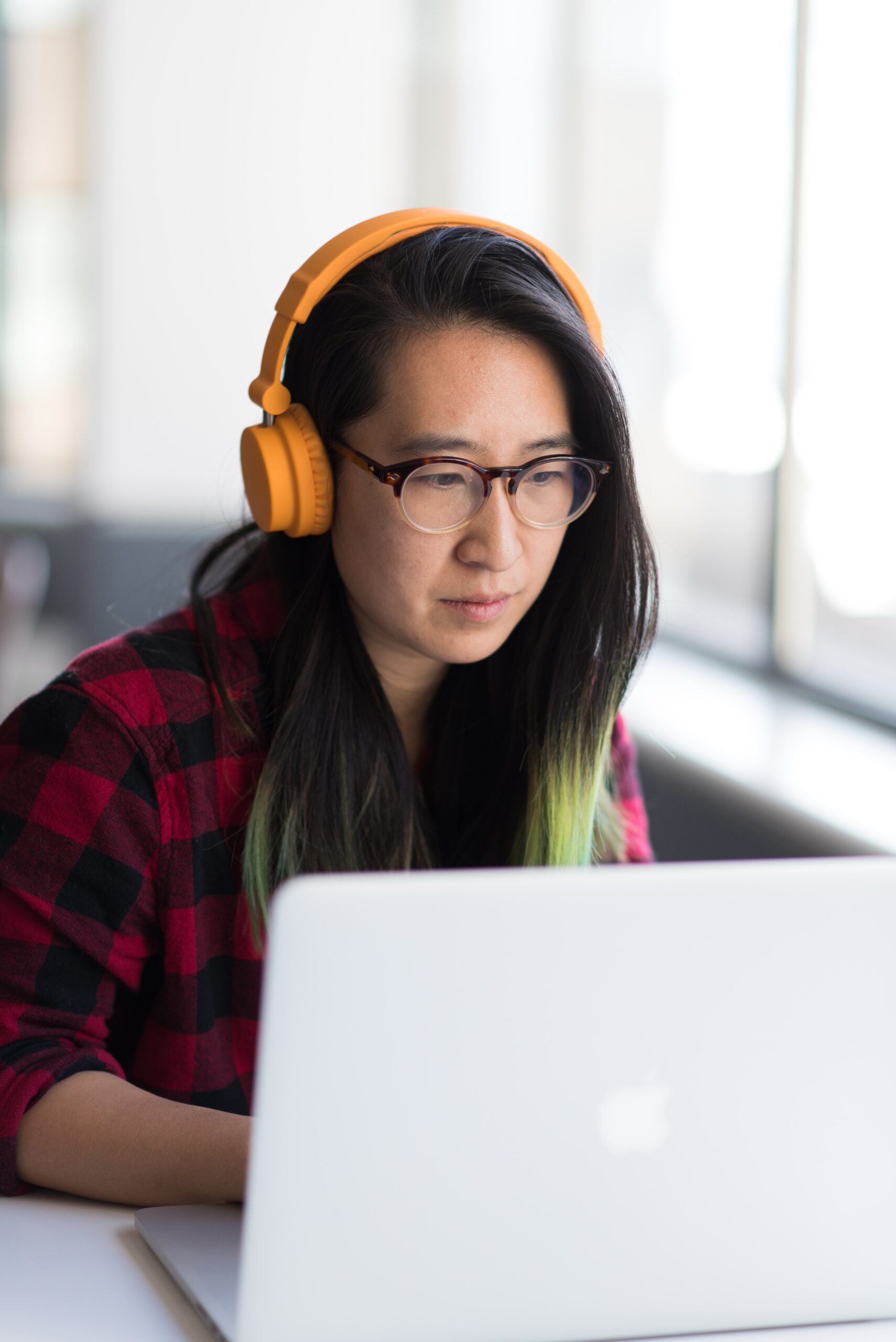On November 24, 2022 AlphaPlus hosted another in our series of Community Gabfests.
We started by asking people to share the things that people love about them.

Our conversation starter was: Learner identity (and blended learning)
Here is what Wayfinder Evan Hoskins said:
Each learner has a connection to the past to be considered. All teachers know … every student comes to learning with a different backstory … and you have to know how to adapt your teaching methods quickly. For example, one day we’ll be talking to a learner about how they learn while dealing with anxiety. On another day we will have to talk about what happened in their world before they dropped out of high school in grade nine. What made them not feel comfortable on the computer? We as teachers learn how to help the learner work through that emotional pain in order to gain the confidence needed to learn how to use the computer, to get their fingers moving again.
What do you think? How do you navigate this terrain and support learners as they develop their learner identities and confidence?
We had a an amazing conversation about
- what we need to know about people so that they can thrive in literacy programs
- how working with learners is an iterative process of experimentation and discovery as literacy facilitators work to find the learning environments that work best for each participant
- the challenges of supporting learners and reducing barriers to learning while mapping boundaries and expectations
- the challenges of nurturing our own mental health and staying energized so we can do the work that we love
- how pandemic recovery is about more than economic opportunities and assessing where we are in terms of digital technology integration
It was a lot. And it was inspiring and validating.
We wrapped up by thanking each other for their contributions and generosity.

Presenters from four programs share how they are expanding learning and accessibility with mobile devices and apps.
To learn about more Apps for education, check out our Useful Apps collection.
On October 27, 2022 AlphaPlus hosted our second Community Gabfest.

We asked the September participants to share their ideas for conversation starters. We got a great list. We decided to combine two ideas that we thought might go together.
The conversation starter for the October Gabfest is warm ups and motivation.
- What are some warm up ideas instructors use with their class?
- What techniques or approaches are people using to engage learners and keep them motivated on their educational journey?
We started with an Answer Garden warm up: What is your favourite thing about talking to literacy workers?
We used a Jamboard to guide our conversation: Wayfinders Gabfest 2 Jamboard.
More warm ups here:
Building Community in Remote Learning Environments
On September 27, 2022 AlphaPlus hosted our first Community Gabfest.
The conversation starter for the first Gabfest was Jim Tysick’s video The Way Forward.
Jim is an experienced and innovative literacy instructor who works at the Sharbot Lake location of the Northern Connections Adult Learning Centres literacy program. In the summer of 2022, he participated in the AlphaPlus Wayfinders Maker Space and created a video about changing his teaching styles to increase learner agency and independence. In The Way Forward, Jim describes how he is changing from a “sage on the stage” approach to become a “guide on the side” teacher.
Here are two quotes that inspire and inform Jim’s work:
- The one who does the work does the learning. – Terry Doyle
- The purpose of adult education is to help them learn, not to teach them all you know and thus stop them from learning. – Carl Rogers
We used a Jamboard to guide our conversation: Wayfinders Gabfest 1 Jamboard.
Resources mentioned in the video
Scott Young
- Practice Made Perfect: The 10 Keys to Optimize Improvement
- See-Do-Feedback: The Right Way To Practice
- Get Started Guide
- The Digital Skills Library indexes Google Applied Digital Skills by topic. In the search box, under name choose Applied Digital Skills to see the list.
Presenters from three programs share how they are using game-based learning and quizzes for fun and quick learning activities.
“We are essentially social beings. We live in societies, of course; but more fundamentally perhaps, it is our participation in social communities and cultural practices that provides the very materials out of which we construct who we are, give meaning to what we do, and understand what we know.”
— Etienne Wenger, Communities of practice: where learning happens, Benchmark Magazine, Fall Issue 1991
We created this resource with the Silver Linings Café participants in June 2020. We updated it in October 2022.
The Silver Linings Café was an Metro Toronto Movement for Literacy initiative that AlphaPlus was invited to participate in.
This resource includes ideas from the Silver Linings Café instructors for how to engage learners and build community in video conferences (Zoom) during the pivot to remote learning during the COVID-19 lock down period. We were all getting used to working in this new environment and came together to share ideas, support each other and figure out how to support learners and learning.

Synchronous Learning
Synchronous learning is where learner(s) and facilitators(s) meet in the same place, at the same time, so learning can take place. This can happen in bricks—and-mortar classrooms or online meetings. Synchronous learning may include a whole class, smaller groups or one-to-one instruction.
In synchronous learning, learners usually go through a learning path together, accompanied by a facilitator who can provide support while learners are completing tasks and activities.
Examples of synchronous learning tools:
- Phone, Zoom, Google Meet, Microsoft Teams…

Asynchronous Learning
Asynchronous learning is a teaching method where learners use their agency and autonomy differently and is widely used in online learning. Its basic premise is that learning can occur in different times and spaces particular to each learner.
In asynchronous learning, facilitators usually set up a learning path which students engage with at their own pace.
Examples of synchronous learning tools:
Email, What’s App, Google Drive, Google Sites, Learning Management Systems such as Canvas, BrightSpace or Moodle…
Reference: Asynchronous vs. Synchronous Learning: A Quick Overview by Maria Ocando Finol
On this site you can read our Position Paper on Blended Learning online and browse a collection of resources to help you and the audiences you communicate with learn about blended learning as an approach.
What else you will find on this site
- Presentations – AlphaPlus webinars about the position paper and the eNet introduction to blended learning.
- The Blended Learning Field Guide – a reflective practice tool about blended learning models and approaches.
- Blended Learning Overview – from the AlphaPlus Digital Technology for Learning site.
- The Blended Learning Toolbox – resources for applying a Blended Learning approach from the AlphaPlus Digital Technology for Learning site.
- The ProLiteracy Blended Learning Guide – and how it aligns with the AlphaPlus position paper.
and graphics you can share with staff, learners, volunteers and community partners
- Definition – the definition from the position paper
- My Life as a Blended Learner – how we Create, Communicate, Collaborate and Think Critically as lifelong learners
- Benefits – the four benefits of blended learning: Blended learning is supports self-confidence and self-reliance; encourages social connection and collaboration; provides flexibilities; and is helps manage systemic inequalities.
- Principles – the three principles of blended learning: Blended learning is learner centred; relevant and useful; and is enhanced by a strong teaching presence
- Blended Learning Infographic and the 4Cs – an infographic about the 4Cs: Be Creative, Communicate, Collaborate, and Critically Analyze
If you’d like a copy of this site to use as a starting point to adapt and expand for use in your program, please get in touch. AlphaPlus can give you a copy and support you in learning how to use a website builder such as Google Sites or Weebly as online learning spaces for learners, staff and volunteers.
Blended Learning Resources
“I’ve always found this compilation of models quite mind-boggling. I find it very difficult to keep all the permutations of a blended learning approach straight. In a conversation with some very wise literacy practitioners from Ontario, I suddenly realized why. I think that instead of reading these models of prescriptions of how to design the delivery of blended learning, we should read them as descriptions of all the ways that educators have developed and adapted a blended learning approach to specific contexts and to meet the needs and circumstances of specific learners.
There is a lot of professional knowledge and wisdom here and, perhaps more importantly, demonstrations of how that wisdom and knowledge is applied in the real world. These models are the curriculum planning frameworks in action.“
Tracey Mollins.
Contact me at tracey@alphaplus.ca to talk about blended learning delivery models.
Here are the models described on the website:
- Four Project-Based Learning Models
- Five Rotation Models
- Station Rotation Blended Learning
- Lab Rotation Blended Learning
- The ‘Flipped Classroom’ Blended Learning
- Individual Rotation Blended Learning
- The Playlist Model
- Two Hybrid Models
- Supplemental Blended Learning
- Mastery-Based Blended Learning
- Three Remote Learning Models
- A La Carte model
- Remote Blended Learning (also referred to as Enriched Virtual)
- Flex Blended Learning
Blended Learning Research
Blended Learning Resources
These frameworks were developed to help educators design and develop technology-rich learning environments. The frameworks help us determine the level of technology integration in the learning environment and evaluate if the technology is enhancing, extending and/or transforming learning.
Tracey Mollins
Contact me at tracey@alphaplus.ca to talk about blended learning delivery models.
These are the Frameworks described on the website
- Designing for Learning Outcomes
- A blended learning framework – ISTE Standards for Students
- A computer basics framework – Northstar Digital Literacy Framework
- A computer basics / blended learning framework – Maryland Department of Labor Digital Literacy Framework for Adult Learners
- A roadmap to reach the City of Seattle’s vision to become a more digitally equitable city, where technology’s opportunities equitably empower all residents and communities – Seattle Digital Equity Initiative Digital Skills Framework
- Designing for Learning Experiences
- The Technology Integration Matrix
- The Triple E Framework
- Thinking about Teaching Innovation
- The SAMR Model – SAMR = Substitution – Augmentation – Modification – Redefinition and describes a way to think about the result of integrating digital technology for learning into a curriculum.
- The LoTi Framework – Levels of Teaching Innovation – This is a Teaching Innovation Framework that is similar to SAMR but includes a resource for reflecting on how different learning activities fit into the framework.
- Designing for Modes of Learning
- Bloom’s Taxonomy – Some people have done some work to align the Bloom’s Taxonomy learning domains to SAMR.
- HEAT – H.E.A.T Framework = Higher-order thinking – Engaged learning – Authentic connections – and Technology use is a student learning framework that describes what learners are doing at different levels of digital technology integration with reference to Bloom’s Taxonomy.
